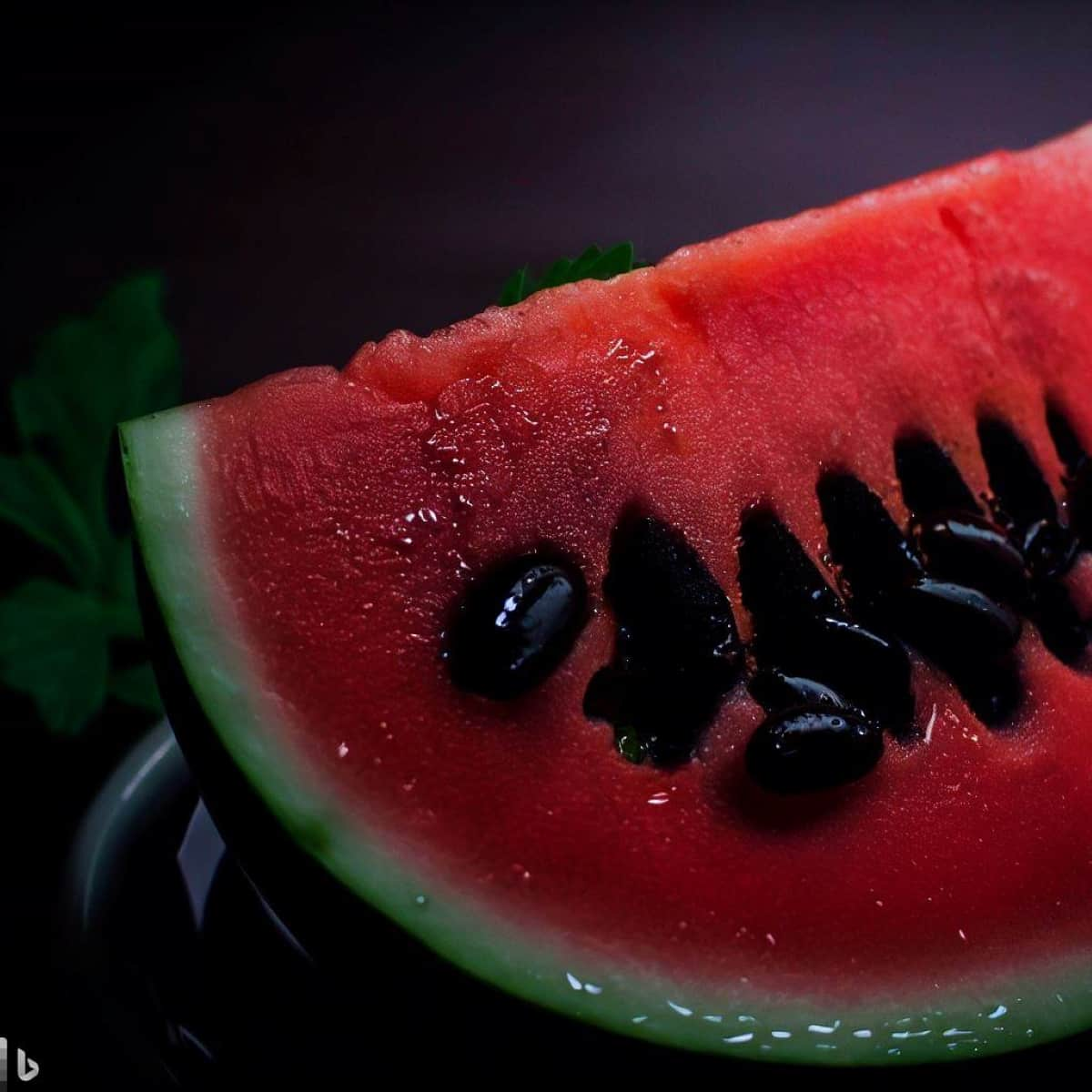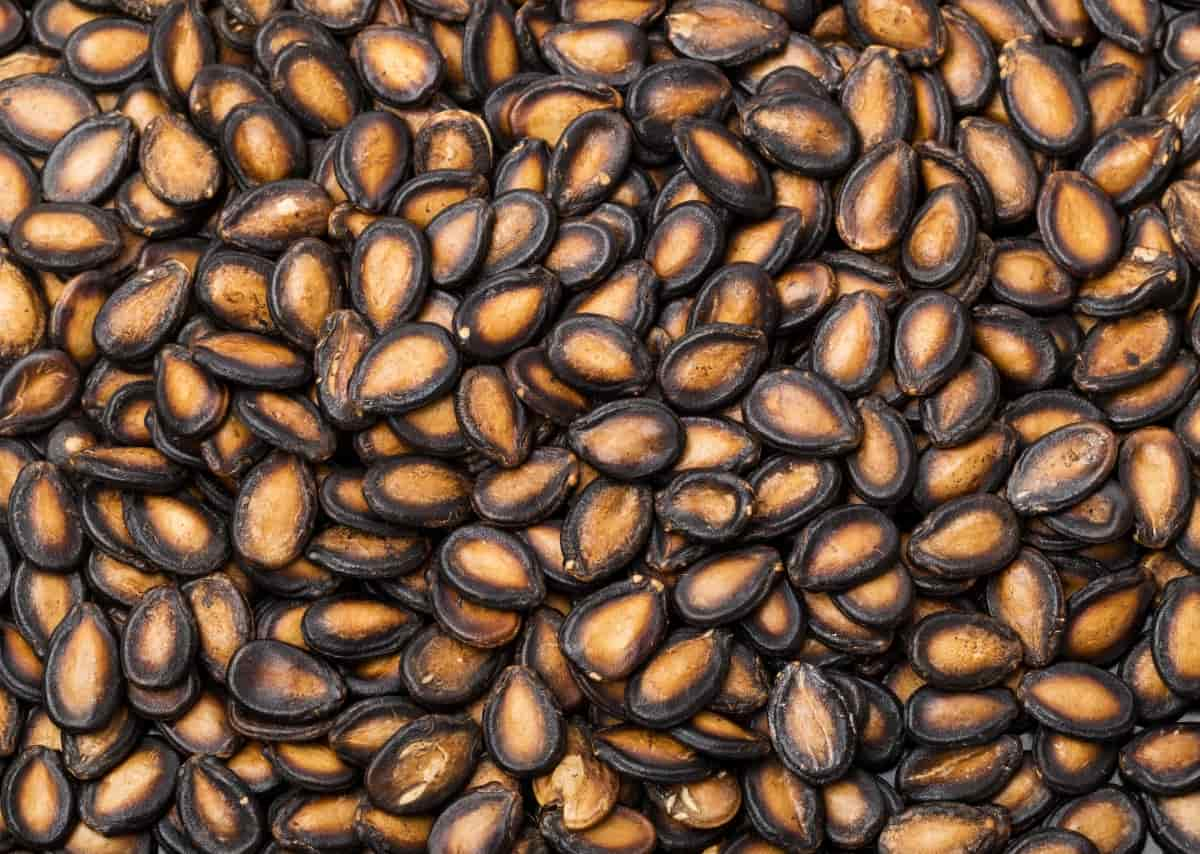The Black Diamond watermelon is a classic favorite among melon enthusiasts, recognized for its striking dark green exterior and sweet, juicy red flesh. One might ask, “What is the average size of a black diamond watermelon?” or “How long does it take to grow a black diamond watermelon?”

The answers might surprise some: Black Diamond watermelon size averages between 30 to 50 pounds, and the duration it takes for a Black Diamond watermelon to grow ranges from 70 to 90 days. And yes, Black Diamond watermelons have seeds, providing a genuine taste of a traditional watermelon experience. With Black Diamond Watermelon seeds available widely, enthusiasts can cultivate this delightful melon in their gardens.
Growing Black Diamond Watermelon from Seeds
Black Diamond Watermelon History, Origin, and Size
The Black Diamond watermelon’s roots trace back to the southern parts of the United States. Since its inception, this melon has become a staple in many gardens, winning the hearts of many with its sweet and refreshing taste. Characterized by its dark green, almost black skin, the Black Diamond watermelon size often impresses, averaging between 30 to 50 pounds. The vastness of this fruit showcases the abundance of the juicy, sweet flesh hidden within its rind, making it a go-to for summer refreshments.
Black Diamond Watermelon Varieties
While the traditional Black Diamond watermelon is well-known, many might be surprised to learn of its diverse varieties. These variations come with subtle differences in taste, size, or growth requirements. Some popular varieties include the “Yellow Belly,” known for its distinctive yellow patch on one side, and the “Icebox,” a smaller version perfect for families to enjoy.
Understanding the Characteristics of Black Diamond Watermelon Seeds
Black Diamond watermelon seeds are distinguishable by their robust nature and dark coloration. Unlike many of today’s seedless watermelons, the Black Diamond watermelons have seeds. These seeds are often used for cultivation, allowing growers to produce watermelons that retain the authentic flavors and characteristics of the original Black Diamond variety.
Selecting the Right Soil and Location for Growing Black Diamond Watermelon
Selecting the right soil and location is crucial for the best results in growing the Black Diamond watermelon. These watermelons thrive in well-draining soil rich in organic matter. The best pH level is between 6.0 and 6.8. As for location, choose a spot that receives ample sunlight, ensuring the plant gets at least 6-8 hours of direct sun daily. Warmth is essential, so planting should commence when there’s no risk of frost and the soil temperature is consistently above 65°F.
Preparing and Planting Black Diamond Watermelon Seeds
Preparation begins once you’ve secured Black Diamond Watermelon seeds and identified a suitable location. First, till the soil to a depth of at least 12 inches, enriching it with compost or aged manure. Create raised hills about 3 feet apart, enhancing drainage and warmth. Plant about six seeds per hill, about an inch deep. Once they sprout and grow a couple of inches tall, thin them to the strongest 2-3 plants per hill.
In case you missed it: How to Pollinate Watermelon: Hand Pollination, Natural Pollination Methods, and Tips

Providing Optimal Watering and Irrigation for Black Diamond Watermelon Plants
Water is vital for the growth of these melons. The key is to provide deep, consistent watering. This ensures the roots get the moisture they need, especially during flowering and fruit development. Don’t water from above too much, as this can lead to fungus. Instead, use a soaker hose or drip system to keep the soil damp but not soaked.
Nutritional Requirements for Healthy Growth of Black Diamond Watermelon
Like all plants, Black Diamond watermelons require specific nutrients for optimal growth. Regularly adding a balanced, all-purpose fertilizer can meet these needs. However, be cautious about over-fertilizing, as too much nitrogen can lead to lush vines but few fruits. Adding compost or well-decomposed manure can provide essential nutrients while improving soil structure.
Managing Pests and Diseases in Black Diamond Watermelon Plants
Black Diamond watermelons, like other varieties, are prone to certain pests and diseases. Common pests include aphids, cucumber beetles, and spider mites. Natural predators, like ladybugs, can help control these pests. You can control diseases like powdery mildew, fusarium wilt, and anthracnose by spacing plants correctly, changing the crops’ positions, and making sure the leaves stay dry.
Pruning and Training Techniques for Black Diamond Watermelon Vines
While watermelons grow as sprawling vines, some growers might opt for pruning to manage their growth. Pruning can enhance air circulation, reduce disease risk, and direct the plant’s energy to fruit production. To do this, prune the growing tips once the plant has produced 3-4 fruits. Also, removing a few lateral shoots can ensure that the plant directs its energy to the primary vines and the fruits.
Harvesting and Storing Black Diamond Watermelons
Determining when a Black Diamond watermelon is ripe for harvest can be a delightful anticipation. One reliable method is the “thump” test: a ripe melon produces a deep, hollow sound. Also, the underside of the watermelon, which rests on the ground, will turn from white to creamy yellow. Once harvested, Black Diamond watermelons can be stored in a cool place for up to two weeks. Remember, how many Black Diamond watermelons per plant varies, but typically, one can expect 2-3 large melons per vine.
Black Diamond Watermelon Price and Where to Buy?
Due to its classic appeal and delectable flavor, the Black Diamond watermelon might be priced a bit higher than some other watermelon varieties in certain markets. Prices can vary depending on the region, seasonality, and fruit quality. Local farmers’ markets, farm stands, and specialized fruit vendors often carry this variety, ensuring fresh and authentic produce. Some online seed vendors and gardening centers also offer Black Diamond Watermelon seeds for those interested in cultivating their patches.
Is Black Diamond and Sugar Baby the Same?: Black Diamond Watermelon Vs. Sugar Baby
While Black Diamond and Sugar Baby watermelons are cherished for their sweet taste and refreshing qualities, they are distinct varieties. The Black Diamond watermelon is known for its dark green, almost black rind and can grow to a sizeable weight of 30 to 50 pounds. On the other hand, the Sugar Baby variety is smaller and more compact, often called an “icebox” watermelon due to its convenient size, perfect for fitting inside a refrigerator. The rind of a Sugar Baby is also typically darker and thicker than a Black Diamond’s, though its flesh shares the same rich red hue.
Black Diamond Watermelon Vs. Regular Watermelon
“Regular watermelon” often refers to the commonly found seedless watermelons in grocery stores. When comparing this with the Black Diamond watermelon, several differences arise. First, as previously noted, Black Diamond watermelons have seeds and boast a dark, almost black rind, making them easily distinguishable.
In case you missed it: Watermelon Companion Plants: Chart, Benefits of Growth and Yield

They also tend to be larger and rounder in shape. In terms of taste, many purists argue that the Black Diamond variety offers a richer and more authentic watermelon flavor than the often milder taste of the typical seedless watermelon. However, preferences vary, and both types have their own set of loyal fans.
Conclusion
The Black Diamond watermelon remains a cherished variety, from its impressive size to its delightful flavor. By taking good care and paying attention, gardeners can delight in the abundant harvest of this traditional melon, relishing the summery flavor with each bite.
- Feed Your Flock for Less: Top 10 Tips to Save on Chicken Feed
- Ultimate Guide to Ossabaw Island Hog: Breeding, Raising, Diet, and Care
- Hatching Answers: The Top 10 Reasons Your Chickens Aren’t Laying Eggs
- Eggs and Economics: Breaking Down the Cost of Raising Backyard Chickens
- Defend Your Greens: Proven Methods to Keep Iguanas Out of Your Garden
- Ultimate Guide to Cinnamon Queen Chicken: A Comprehensive Guide for Beginners
- Ultimate Guide to California Tan Chicken: Breeding, Raising, Diet, Egg-Production and Care
- Ultimate Guide to Marsh Daisy Chicken: Breeding, Raising, Diet, and Care
- 10 Types of Chicken Farming Businesses You Can Start for Profits